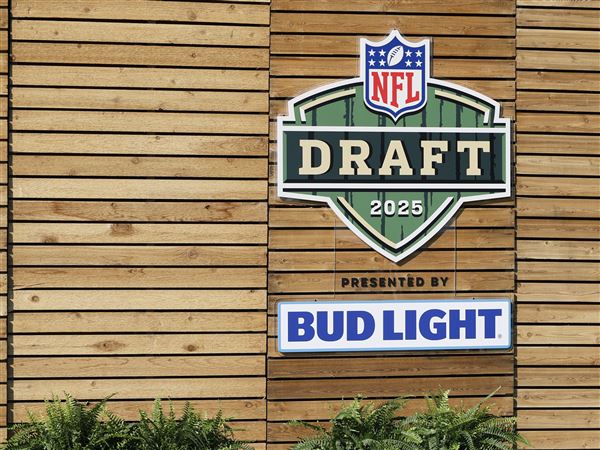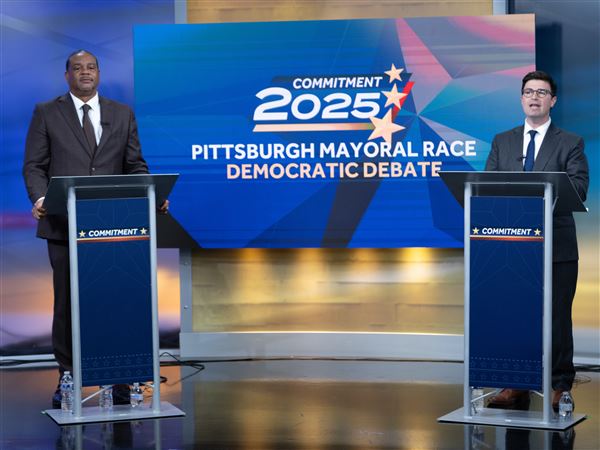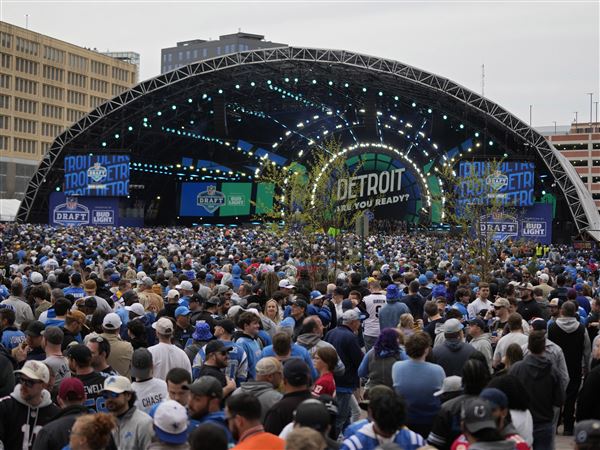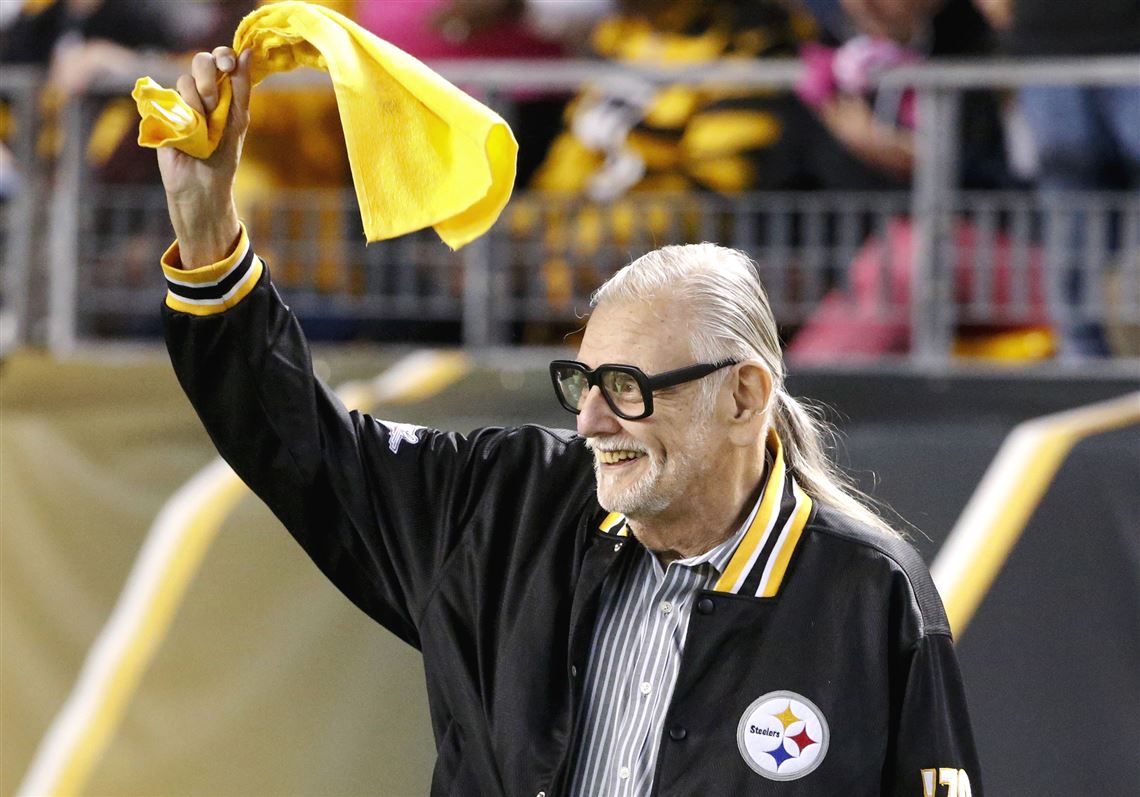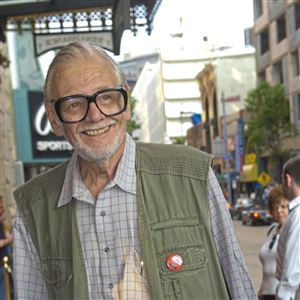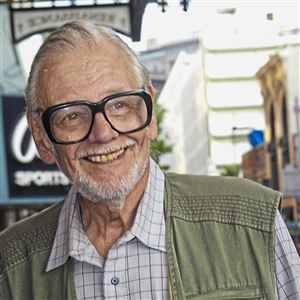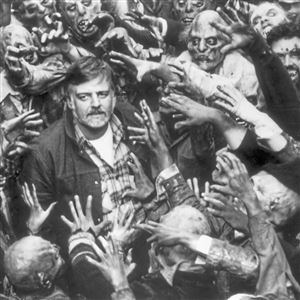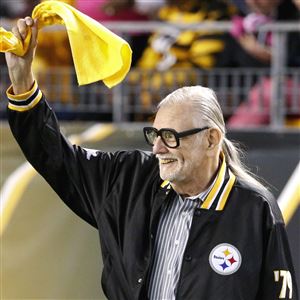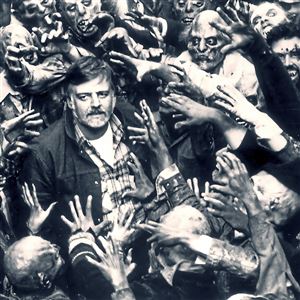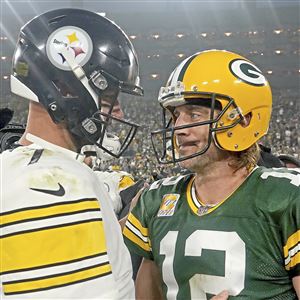In many ways, the late George Romero is the late Andy Warhol in reverse when it comes to migration to Pittsburgh. Mr. Romero, a New Yorker, fled his hometown with its familiar distractions in the 1960s to attend Carnegie Mellon University.
Warhol fled Pittsburgh in the 1950s after graduating from what was then Carnegie Tech. He realized there was nothing here for him except what might amount to permanent “odd man out” status.
Both Mr. Romero and Warhol thrived in environments the other found creatively stifling, which only goes to prove that it probably isn’t where one ends up that makes the difference as much as having something to say once you arrive.
Warhol craved the cosmopolitanism of Gotham long before he ever got there. He made a lot of money in advertising, immersed himself in high society and spearheaded Pop Art, arguably the most influential art movement of the second half of the 20th century.
By comparison, George Romero’s contribution to the zeitgeist is considerably narrower, but in many ways just as impactful. With his 1968 debut film “Night of the Living Dead,” he created a subgenre of horror narrative centered on the post-apocalyptic conflict between ordinary people and the undead — creatures he called “ghouls” initially, but what most of us now call zombies.
Mr. Romero was very much influenced by the horror fiction of Richard Matheson, specifically his classic “I Am Legend” novel about a world overrun by vampires and how an uninfected man dealt with his grief and solitude after civilization collapsed.
When Mr. Romero was outlining the story for what would become “Night of the Living Dead,” he ruled out using vampires because the resulting story would’ve been too similar to Mr. Matheson’s classic.
He also ruled out carnivorous aliens as too absurd. It was an intuitive leap on Mr. Romero’s part that led him to imagine a danger closer to home. What would happen if the recent dead somehow reanimated and got incurably hungry for human flesh?
It’s one thing to be eaten alive by a generic monster or an alien creature — something outside of our species. Mr. Romero was smart enough to tap into what was already in us — a primordial fear of being eaten by another human or something human-like. There are few things more terrifying than relentless cannibals shuffling in our direction.
“Night of the Living Dead” also hit movie theaters at a time of maximum social anxiety — 1968 was the year America lost Martin Luther King Jr. and Robert Kennedy to assassins’ bullets. Inner cities were on fire. The Tet Offensive had turned the tide of the Vietnam War. University campuses were embroiled in protests over everything from civil rights to stopping the war. Richard Nixon’s “Silent Majority” was flexing its muscle again a mere four years after Goldwater’s crushing defeat by Lyndon Baines Johnson.
“Night of the Living Dead” featured a black man in the lead role as Ben, the resourceful zombie fighter who did his best to keep alive a group of five strangers caught in a house surrounded by zombies.
Actor Duane Jones didn’t want to play the character as originally written — as an uneducated truck driver — so he invested Ben with his own intelligence by ad-libbing most of his lines.
Consequently, movie critics picked up on the fact that Ben was a black man with an education, possibly even a doctor. At a time when Sidney Poitier was considered the only bankable black actor who could play lead in a movie, casting Duane Jones in that role was a social revolution that can’t be underestimated. Remember, this was an independent film being made far outside of the Hollywood system, so it had to abide by only its own rules.
Given what ultimately happened to Ben at the end of “Night of the Living Dead” (no spoilers!), the movie also managed to make a not-so-subtle statement about the arbitrariness of American violence and what would eventually become known as racial profiling.
I love the fact that “Night of the Living Dead” was partially financed by money Mr. Romero made shooting short film segments for “Mister Rogers’ Neighborhood,” another up-and-coming Pittsburgh institution that went national. The fact that the saintly Fred Rogers is indirectly complicit in the birth of the zombie genre is too perfect an irony to go unmentioned.
For those who pooh-pooh any comparison between Mr. Romero and Warhol, maybe this analogy will be less provocative — George Romero is the closest thing Western Pa. has ever had to Stan Lee. Like the Marvel Comics editor-and-chief throughout the 1960s who changed the comic book medium and industry with the help of brilliant collaborators like Jack Kirby and Steve Ditko, Mr. Romero was a a genial, protean innovator of the first rank who inspired generations of writers and filmmakers to scare the hell out of us with zombies.
If, like Warhol, George Romero is buried in Western Pa., he can count on a lot of visitors to his grave. And for once, no one will be pressing him for a sequel.
Tony Norman: tnorman@post-gazette.com or 412-263-1631.
First Published: July 18, 2017, 10:00 a.m.
